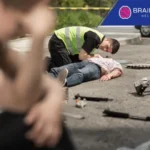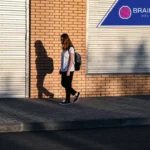LOS ANGELES, CA — Chronic Traumatic Encephalopathy (CTE), a degenerative brain disease linked to repeated head impacts, is again at the center of public attention following a mass shooting in New York in which the suspect left a note referencing the condition and blaming the NFL.
CTE can only be diagnosed after death through a brain autopsy, according to the Mayo Clinic. Symptoms, which may resemble Alzheimer’s disease or normal aging, can include memory loss, confusion, mood changes, and motor problems. Research from Boston University’s CTE Center has found the disease in more than 90% of former NFL players studied.
While football is the sport most often associated with CTE, experts note that the risk extends to other contact sports, including hockey and boxing, as well as military service and other activities involving repeated head impacts.
State protocols
California has enacted laws to reduce the risk of head injuries in young athletes. Under Education Code §49475, student-athletes suspected of sustaining a concussion or head injury during practice or competition must be removed from play for the remainder of the day.
They may not return until evaluated and cleared in writing by a licensed health care provider trained in concussion management. They must complete a stepwise, supervised return-to-play process lasting at least seven days.
Assembly Bill 2007, signed into law in 2016, expanded those protections to youth sports organizations outside the school system. It requires coaches and administrators to complete annual concussion and head injury education. It mandates that parents or guardians be notified if an athlete under 18 is removed from play due to a suspected concussion.
The California Interscholastic Federation (CIF) also incorporates these rules into its bylaws, requiring immediate removal, medical clearance, and adherence to return-to-play protocols.
Scope of the issue
In 2022, Californians aged 0–24 recorded 33,626 emergency room visits and 4,827 hospitalizations for traumatic brain injuries, according to the California Department of Public Health — a figure advocates say underscores the urgency of concussion prevention.
For parents and coaches: quick action plan
- Remove when in doubt. Headache, dizziness, confusion, balance issues, or behavior changes → take the athlete out immediately. When in doubt, sit them out.
- Medical evaluation. Seek prompt assessment by a licensed provider trained in concussion care. Written clearance is required for return.
- Return-to-Learn, then Return-to-Play. Coordinate with schools for academic adjustments before beginning the state-mandated, seven-day minimum stepwise return to sport.
- Education & notification. Make sure parents are informed and coaches complete annual concussion training — this applies to youth leagues as well.
How Brain Injury Help Center Can Help
If your child has persistent symptoms after a concussion—or you’re worried about cumulative head impacts—we can act quickly to protect your health and rights:
Medical Support
- Neurology & neuropsychological testing
- Coordination with concussion specialists and therapists
Legal Protection
- Advocacy when schools, leagues, or coaches fail to follow concussion protocols
- Legal guidance for negligence or unsafe sports practices
- Support in securing benefits, compensation, or coverage for treatment
Free, confidential consultation — We make the invisible visible by protecting your child’s brain health and defending their legal rights.









